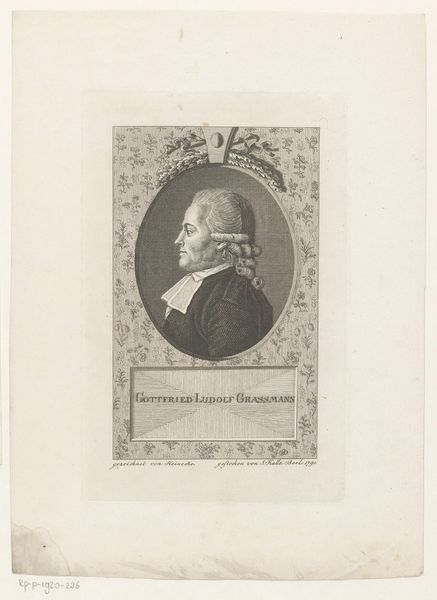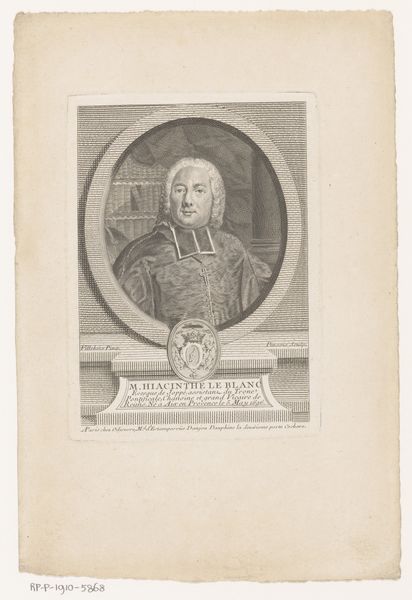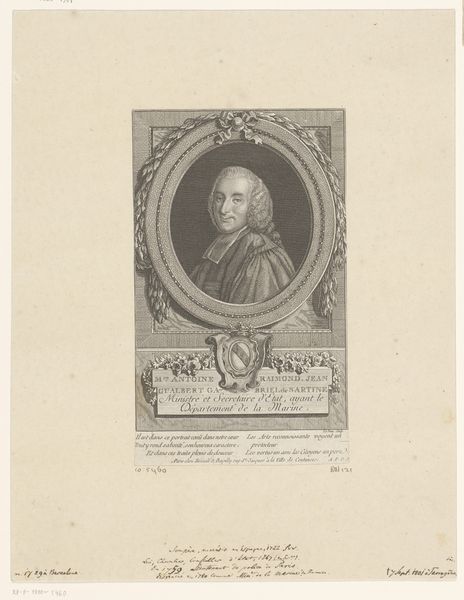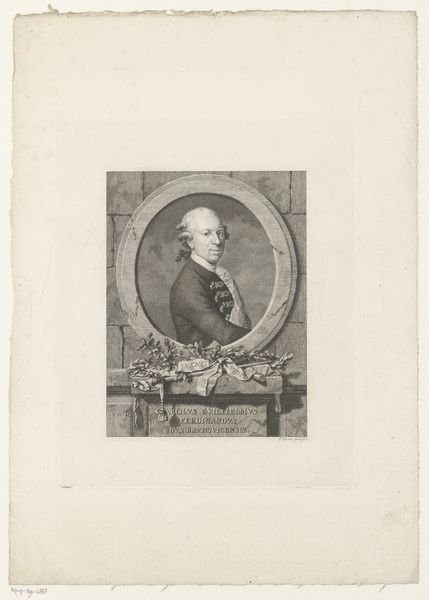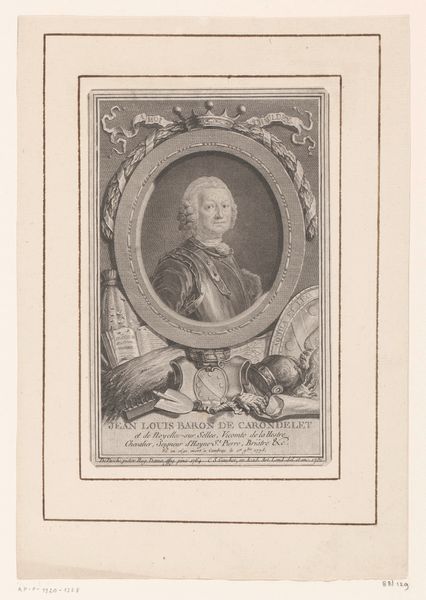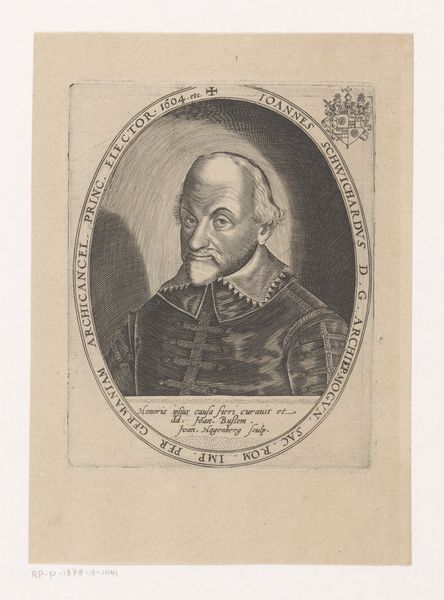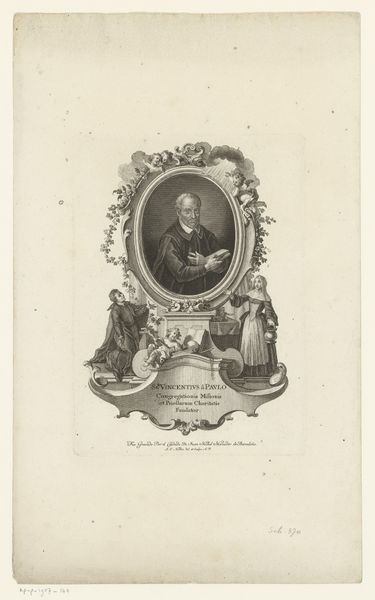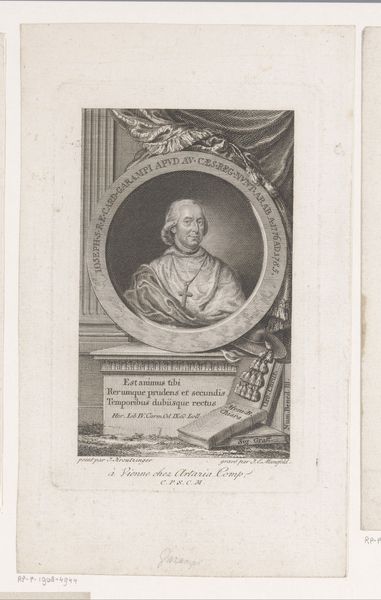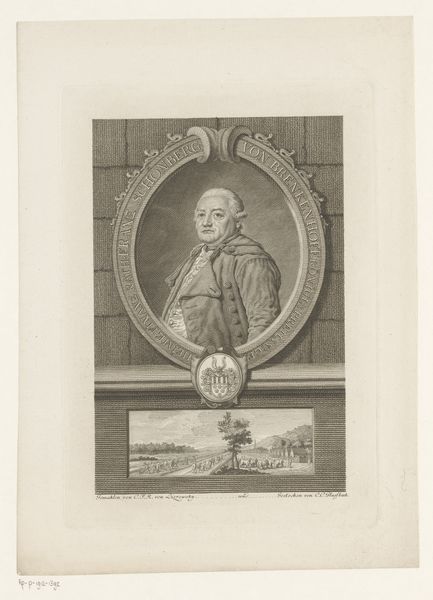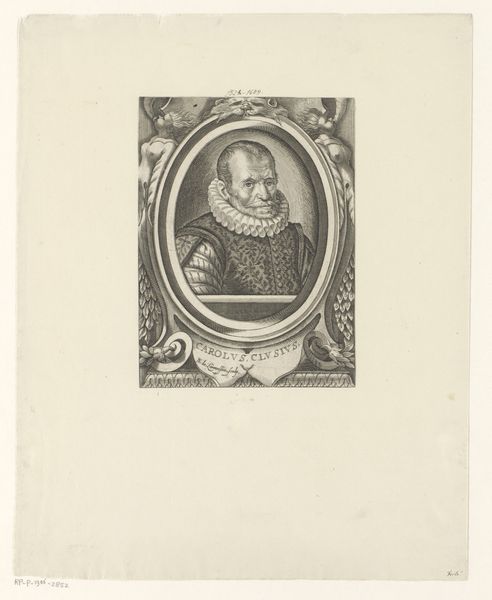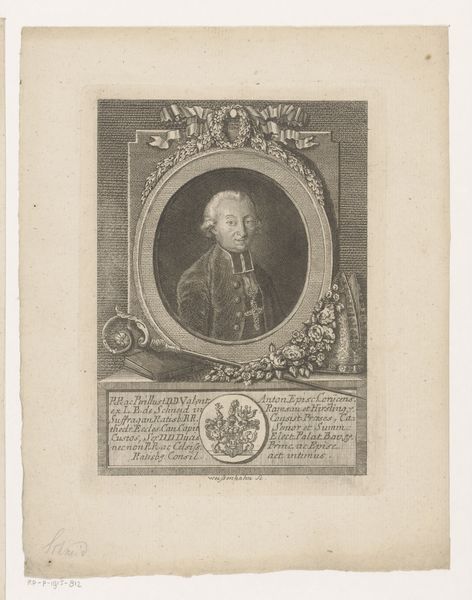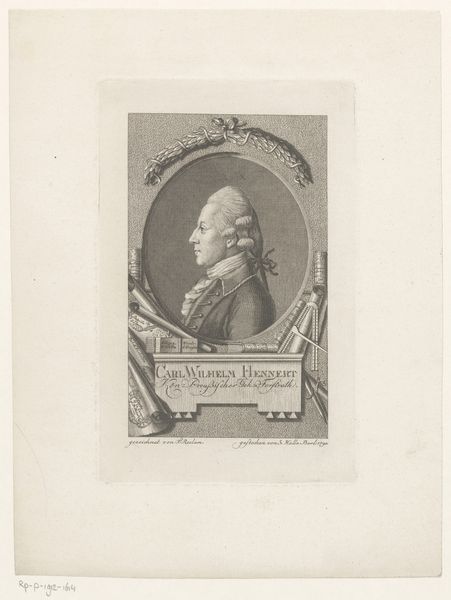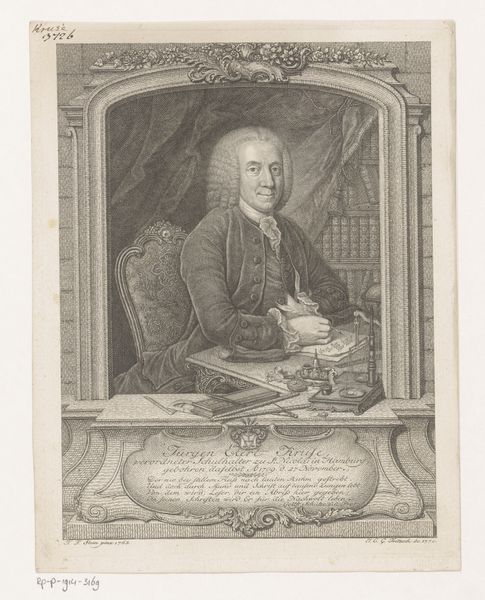
Dimensions: height 204 mm, width 152 mm
Copyright: Rijks Museum: Open Domain
Curator: This is Georg Lichtensteger’s 1771 engraving, "Portret van Ferdinand Jakob Baier," currently housed at the Rijksmuseum. It’s printed on paper, a portrait in the Baroque style. Editor: Yes, it’s a very formal portrait. What strikes me is the way Baier is framed by both the oval border and what looks like draped fabric. It feels very staged, a sort of construction of power, really. What do you see in this print? Curator: Exactly! The framing devices are crucial. Consider the labor involved in creating this image. The engraver meticulously transfers an image, demanding incredible skill and time. It elevates Baier's status not simply through representation but through this demonstrable investment of labor. The paper itself also speaks to a certain level of access and privilege. Consider who could afford such a detailed portrait versus a simple sketch. How does that relate to the subject’s perceived status? Editor: That's interesting – thinking about the material and labor going *into* depicting status *as* contributing to that status! The act of printing becomes almost performative. Does the type of paper matter as well? Curator: Absolutely! Think about the different qualities of paper available at the time and the symbolism tied to those choices. A finer paper could communicate greater wealth. Now look at the inscription at the bottom. What does it suggest about the intent of the print's production and consumption? Editor: Hmm, that it wasn't just about Baier but also about broadcasting something about him, solidifying a specific narrative. So the materiality amplifies the message? Curator: Precisely. And who consumed such prints? Consider how this image would circulate within social networks and contribute to Baier's legacy. Understanding that social and material context fundamentally shifts our understanding of this portrait, doesn’t it? Editor: It really does! I’d never considered the role of paper and engraving in constructing the image and his social standing. Curator: By focusing on materials and their production, we reveal the hidden mechanisms by which images shape our understanding of power and status in society.
Comments
No comments
Be the first to comment and join the conversation on the ultimate creative platform.
